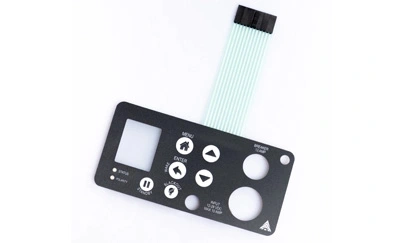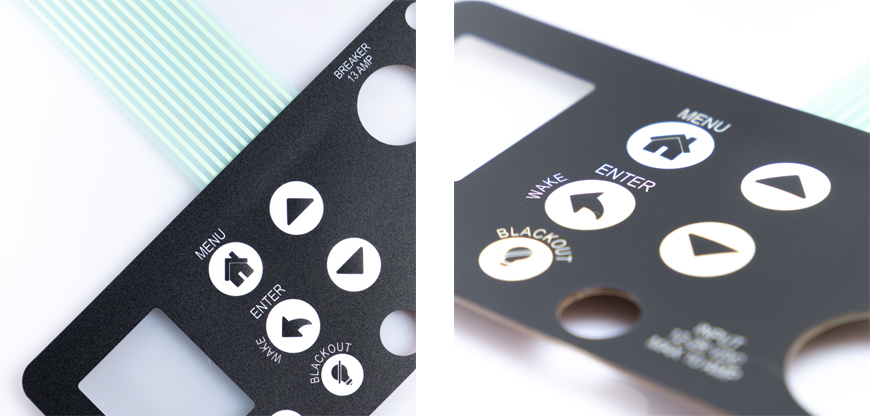
In today's technologically driven world, membrane switches have become an integral part of various electronic devices, from microwave ovens to sophisticated medical equipment. These thin, flexible switches provide a user-friendly interface for controlling and operating these devices. In this article, we'll delve into the intricate workings of membrane switches, exploring their structure, functionality, applications, and advantages.

1. Introduction to Membrane Switches
2. Components of a Membrane Switch
· Membrane Layers
· Conductive Traces
· Graphic Overlay
3. How Membrane Switches Work
· Keystroke Activation
· Conductivity and Circuit Completion
· Tactile Feedback
4. Applications of Membrane Switches
· Consumer Electronics
· Medical Devices
· Industrial Control Panels
5. Advantages of Membrane Switches
· Durability
· Customization
· Cost-Effectiveness
6. Manufacturing Process
· Screen Printing
· Cutting and Laminating
· Assembling
7. Maintenance and Care
8. Conclusion
9. FAQs
· Are membrane switches waterproof?
· Can membrane switches withstand extreme temperatures?
· How long do membrane switches typically last?
· Can I customize the appearance of a membrane switch?
· Are membrane switches suitable for outdoor use?
Membrane switches are user interface devices that allow for the input of commands or instructions by pressing specific areas, known as keys or buttons. They are composed of multiple layers of flexible materials, which makes them highly versatile and suitable for various applications.
Membrane Layers
The fundamental component of a membrane switch is a series of thin, flexible layers made of polyester, polycarbonate, or other durable materials. These layers are responsible for the switch's flexibility and durability.
Conductive Traces
Beneath the top membrane layer, there are conductive traces or paths. These traces are typically made of silver or copper and serve as the conductive channels that transmit electrical signals.
Graphic Overlay
The topmost layer of a membrane switch is the graphic overlay. This layer is printed with symbols, icons, or text that correspond to the functions of the individual keys or buttons.
Keystroke Activation
When a user presses a key on a membrane switch, the top membrane layer deforms, bringing the conductive traces in contact with each other. This action creates an electrical connection, registering the keystroke.
Conductivity and Circuit Completion
The conductive traces transmit the electrical signal to the controller, which interprets the input and performs the desired action. Once the key is released, the elasticity of the membrane layer restores the switch to its initial state.
Tactile Feedback
Some membrane switches are designed to provide tactile feedback, giving users a sensory response when a key is pressed. This feedback enhances the user experience by confirming that the input has been registered.
Consumer Electronics
Membrane switches are commonly found in consumer electronics like remote controls, microwave ovens, and television sets due to their sleek design and reliability.
Medical Devices
In the medical field, membrane switches are used in devices such as infusion pumps and diagnostic equipment. Their durability and ease of cleaning make them ideal for healthcare settings.
Industrial Control Panels
Industrial control panels and machinery often feature membrane switches for their resistance to dust, moisture, and chemical exposure.
Durability
Membrane switches are known for their durability, with some models capable of withstanding millions of actuations without failure.
Customization
Manufacturers can easily customize the appearance and functionality of membrane switches to meet specific design and branding requirements.
Cost-Effectiveness
Compared to traditional mechanical switches, membrane switches are cost-effective to produce, making them an economical choice for manufacturers.
The manufacturing of membrane switches involves several key steps, including screen printing, cutting and laminating, and final assembly. These processes ensure the production of high-quality and reliable switches.
To prolong the lifespan of membrane switches, regular cleaning and proper care are essential. Avoid harsh chemicals and abrasive materials when cleaning, and follow manufacturer recommendations for maintenance.
Membrane switches play a crucial role in modern electronics, offering a reliable and user-friendly interface. Their versatility, durability, and cost-effectiveness make them a preferred choice for various applications. Whether you encounter them in your everyday appliances or specialized medical equipment, membrane switches are silently at work, simplifying our interactions with technology.
1. Are membrane switches waterproof?
Yes, many membrane switches are designed to be waterproof or water-resistant, making them suitable for environments where moisture is a concern.
2. Can membrane switches withstand extreme temperatures?
Membrane switches can be manufactured to withstand a wide range of temperatures, making them suitable for both indoor and outdoor applications.
3. How long do membrane switches typically last?
The lifespan of a membrane switch depends on factors like usage and environmental conditions, but they are known for their durability and can last for many years.
4. Can I customize the appearance of a membrane switch?
Yes, membrane switches are highly customizable in terms of design, color, and layout, allowing manufacturers to tailor them to specific brand or product requirements.
5. Are membrane switches suitable for outdoor use?
Yes, membrane switches can be designed to withstand outdoor conditions, including exposure to sunlight and varying temperatures, making them suitable for outdoor applications.